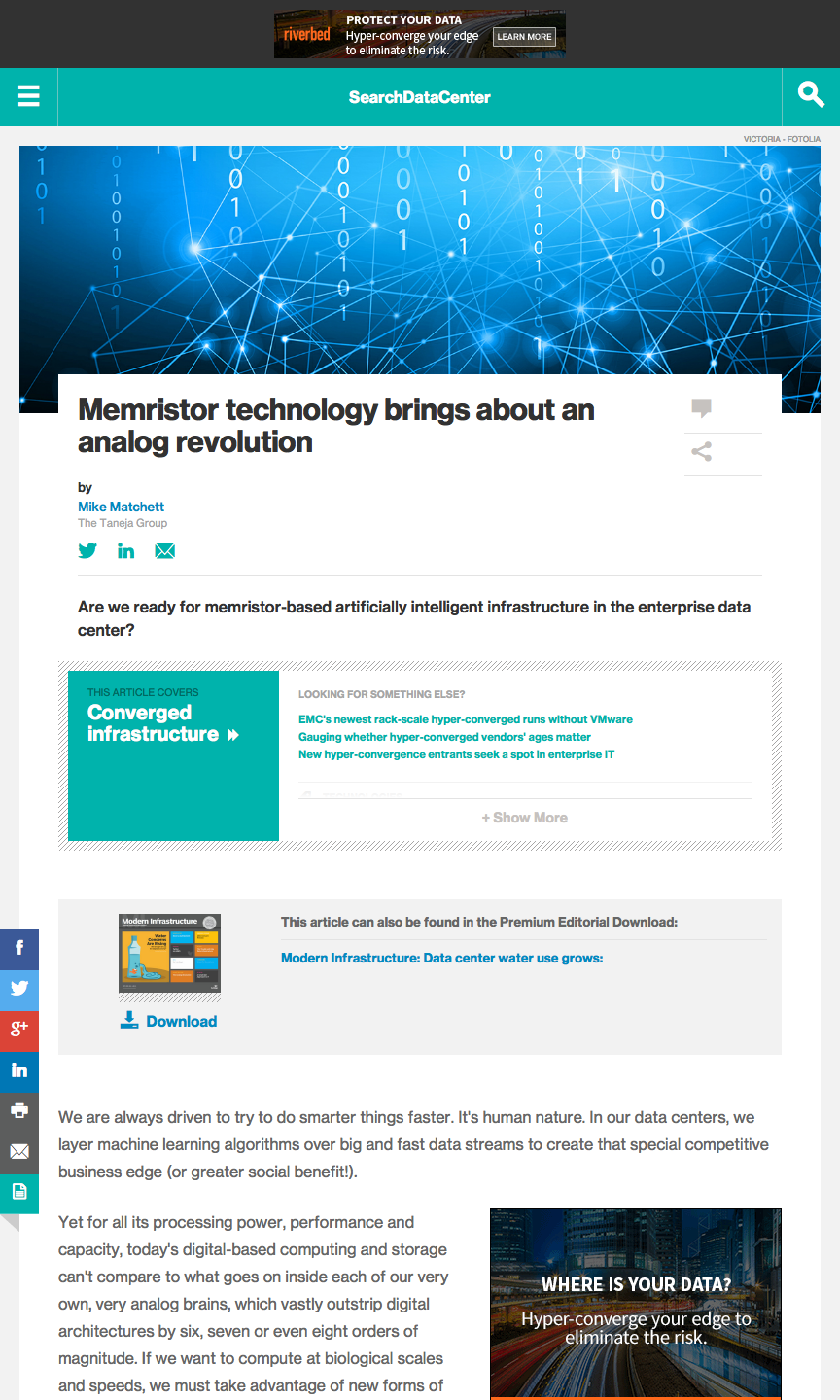Memristor technology brings about an analog revolution

An IT industry analyst article published by SearchDataCenter.
 We are always driven to try to do smarter things faster. It’s human nature. In our data centers, we layer machine learning algorithms over big and fast data streams to create that special competitive business edge (or greater social benefit!).
We are always driven to try to do smarter things faster. It’s human nature. In our data centers, we layer machine learning algorithms over big and fast data streams to create that special competitive business edge (or greater social benefit!).
Yet for all its processing power, performance and capacity, today’s digital-based computing and storage can’t compare to what goes on inside each of our very own, very analog brains, which vastly outstrip digital architectures by six, seven or even eight orders of magnitude. If we want to compute at biological scales and speeds, we must take advantage of new forms of hardware that transcend the strictly digital.
Many applications of machine learning are based on examining data’s inherent patterns and behavior, and then using that intelligence to classify what we know, predict what comes next, and identify abnormalities. This isn’t terribly different from our own neurons and synapses, which learn from incoming streams of signals, store that learning, and allow it to be used “forward” to make more intelligent decisions (or take actions). In the last 30 years, AI practitioners have built practical neural nets and other types of machine learning algorithms for various applications, but they are all bound today by the limitations of digital scale (an exponentially growing Web of interconnections is but one facet of scale) and speed.
Today’s digital computing infrastructure, based on switching digital bits, faces some big hurdles to keep up with Moore’s Law. Even if there are a couple of magnitudes of improvement yet to be squeezed out of the traditional digital design paradigm, there are inherent limits in power consumption, scale and speed. Whether we’re evolving artificial intelligence into humanoid robots or more practically scaling machine learning to ever-larger big data sets to better target the advertising budget, there simply isn’t enough raw power available to reach biological scale and density with traditional computing infrastructure.
…(read the complete as-published article there)
